Remote entanglement stabilization for superconducting qubits
Contact: Mazyar Mirrahimi (mazyar.mirrahimi [at] inria.fr)
This theoretical PhD thesis, with potential of direct application to some experiments performed by the experimentalists of our QUANTIC1 team at ENS, has for goal to address
some of the scaling issues for quantum information processing with superconducting qubits. In this regard, remote entanglement of spatially separated quantum systems could be
considered as a powerful resource towards a modular approach. In such an approach, the quantum information is encoded, protected and locally manipulated in small units consisting
of a few cavity modes or/and few qubits and the communication between modules is ensured through quantum teleportation techniques. Sharing of a pair of entangled subsystems between two modules is central for these teleportation protocols. While this isolation of the modules simplifies the scaling by avoiding any undesired cross-talk between the units, the absence of local interactions leads to difficulties for entanglement generation.
Through this PhD thesis, we aim in designing an efficient stabilization protocol for such remotely entangled states. Such a stabilization scheme should not only, deterministically,
generate a maximally entangled state but also protect this state against various decoherence channels. In order to circumvent the requirement for local interactions, we will exploit the possibility of coupling the distant qubits to quantum correlated noise sources. Our initial choice for such a source of correlated microwave drives is the two-mode squeezed fields
generated by a Josephson ring modulator. Indeed, in a recent experiment [1], the experimentalists of the QUANTIC team illustrated that such a non-degenerate Josephson
mixer can very efficiently produce usable EPR (Einstein-Podolsky-Rosen) states of microwave light.
While some theoretical proposals, exploring the application of correlated drives for such a stabilization task can be found in the literature [2, 3], they generally require an important
symmetry in the parameters of the system: similar frequencies, coupling strengths between qubits and cavities or/and decay rates. In order to circumvent such symmetry requirements, which are rather hard to achieve with quantum superconducting circuits, we will follow the approach of our recent results [4, 5]. Following the proposal of [5], the symmetry requirements could be concentrated on the strengths of dispersive couplings between qubits and cavities. Indeed, by modeling the effect of coupling to a non-classical noise source through a quantum cascading approach [6], we should be able to generalize the ideas of [4, 5].
This PhD thesis will be performed in close collaboration with the experimentalists of the QUANTIC team, our collaborators at CEA (Quantronics group) and at Yale university (Group of Michel Devoret).
[1] E. Flurin, N. Roch, F. Mallet, M. Devoret, B. Huard, Phys. Rev. Lett 109, 183901 (2012).
[2] B. Kraus, J. Cirac, Phys. Rev. Lett 92, 013602 (2004).
[3] M. Paternostro, W. Son, M. Kim, Phys. Rev. Lett 92, 197901 (2004).
[4] S. Shankar, M. Hatridge, Z. Leghtas, K.M. Sliwa, A. Narla, U. Vool, S.M. Girvin, L. Frunzio, M. Mirrahimi, M.H. Devoret, Nature 504, 419 (2013).
[5] Z. Leghtas, U. Vool, S. Shankar, M. Hatridge, S.M. Girvin, M. Devoret, and M.Mirrahimi, Phys. Rev. A 88, 023849 (2013).
[6] C.W. Gardiner and P. Zoller, Quantum Noise, 2nd ed. (Springer, Berlin) (2000).
